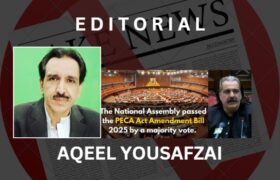Pakistan has an installed power generation capacity of 43,000 MW, yet there exists a significant disparity between the base load of around 12,500 MW and the summer peak load, which can reach 30,000 MW. This gap is largely due to the shift in winter heating loads from electricity to gas. However, contractual obligations compel the government to pay for the entire installed capacity year-round, regardless of actual usage. As a result, the country, particularly Khyber Pakhtunkhwa (KP), continues to face severe load shedding and load management challenges, impeding both economic and industrial growth.
At the closing of the last fiscal year (ending June 30th, 2024), Pakistan’s energy import bill soared to $27 billion. Alongside these external expenditures, the country also incurred hundreds of millions of dollars in payments to Independent Power Producers (IPPs). Despite these significant outlays, Pakistan still struggles to meet the energy demands of its households and industries.
Federal and provincial governments are facing intense criticism for the country’s ongoing energy crisis. In May 2024, under mounting public pressure, KP’s Chief Minister personally intervened by entering a power grid station in Dera Ismail Khan to restore electricity amid protests over load-shedding lasting up to 22 hours. Similar incidents were reported across other cities in the province, with political leaders forcefully entering WAPDA premises, further complicating the efforts of officials to manage the grid effectively.
A resolution was eventually reached, and it was agreed that KP would experience fewer power cuts. Additionally, mutual efforts would be made to address key issues, including debt settlements and minimizing line losses.
KP continues to experience a severe electricity shortfall. According to an official from the Peshawar Electric Supply Company (PESCO), the current power shortfall in KP has grown to 1,138 megawatts. “KP’s total energy demand is 2,916 MW, while the supply is only 1,778 MW, leaving a shortfall of 1,138 MW,” the official stated. To manage this deficit, “PESCO enforces up to 16 hours of load shedding on certain feeders to maintain voltage levels and ensure a stable electricity supply.”
This crisis raises several critical questions: How did a country with the potential to generate 40,000 to 70,000 megawatts of hydropower—once a leader in cheap per capita hydropower production—end up in such dire straits? What is the stance of political parties on Pakistan’s decades-old energy crisis? How effective have KP’s efforts been in load management and curbing electricity theft?
In the 1990s, Pakistan shifted to an imported fossil fuel-based energy policy due to successive governments’ failure to unite the provinces in support of new large-scale hydropower projects, despite growing energy demands. By the time a consensus was finally reached on the development of such projects, the country had already plunged into a deep economic crisis, and reliance on IPPs to invest in imported oil-based electricity projects persisted.
During the 2010s, existing IPP agreements were not only revised, but new IPPs were added. A particularly detrimental policy allowed IPPs to receive hefty capacity charges in foreign currency, even for solar and wind energy projects. This policy urgently requires a complete overhaul. All agreements with IPPs should be revisited, with priority given to hydropower and nuclear energy as the primary means of electricity production in Pakistan. Wind and solar should serve as secondary renewable sources.
Revising these agreements may be challenging, but it is essential. Otherwise, the circular debt in the energy sector—driven by these flawed contracts—will continue to undermine the entire economy. Already, Pakistani exporters face tough competition in international markets due to the high cost of production.
Meeting energy demands solely through expensive, non-renewable fossil fuels is not a sustainable energy strategy. This should be the key lesson learned from the past three decades. Pakistan must exploit hydropower and nuclear energy to their fullest potential, as they promise cheaper, long-term electricity for both individuals and industries while ensuring a full return on investment (ROI).
Projects such as the Diamer-Basha and Dasu dams should not be isolated examples. WAPDA has completed feasibility studies for several other hydropower projects, which should be prioritized as soon as the current dams under construction are completed. IPPs running on fossil fuels should be phased out, and new investments in the energy sector should focus exclusively on hydropower, solar, or wind energy projects.
It is imperative that Pakistan’s political leadership convenes urgently to discuss and implement these suggestions. Energy demand is rising with each passing day, and politically motivated, short-term measures will only exacerbate the crisis, jeopardizing the future of both the state and its people.





